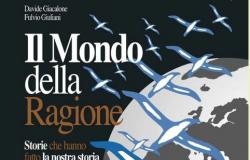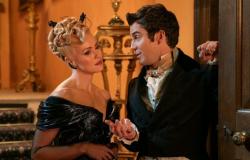“It takes an eye, heart and brain” reveals a Henri Cartier-Bresson (Chanteloup-en-Brie, 1908 – Montjustin, 2004) talking incognito about photography in archive footage recovered from Teche Rai.
Twenty years after his death, the extraordinary work of the French photojournalist continues to be a point of reference for the sector. Now his precious considerations on the profession that made him famous throughout the world have been recovered in the Rai documentary “First floor. Henri Cartier-Bresson and the world of images”from 1964.
The documentary “First floor. Henri Cartier-Bresson and the world of images”
Aired only once, and rediscovered by Rai Teche and Rai Cultura who propose it again Monday 27 May at 7.20pm on Rai 5 for the series Dorianthe documentary with texts by Giorgio Bocca and directed by Nelo Risi it is an invaluable document.
The protagonists are Henri Cartier-Bresson, who appears as a silhouette against the light, and Romeo Martinezthen director of the magazine Room and photography historian, who interviews him.
“The public – states Bresson in the documentary – He’ll excuse me if I don’t look him in the face, but the work I do forces me to remain anonymous. It’s a profession that is practiced point blank, catching people off guard and where showing off is not allowed.”.
The article continues below
Bresson’s words on photography
The founder ofMagnum agency, therefore, he does not show himself, to give space solely to his words and his shots. He who defines himself as a memoirist, rather than a reporter, reflects on photography and the role of this medium.
In the short video extract that we propose, for example, a baby chimpanzee is seen holding a camera in his hand: Bresson reasons on the fact that even the primate is capable of taking a photo, like many ordinary people, taking for example the tourists.
Thus openly criticizing the society of sixty years ago which, according to him, he lived in “an era that rapes nature and disintegrates the image”the great master explains: “For me, rigor, a certain control, a discipline of the spirit, a culture, and finally intuition and sensitivity are needed. It also requires a certain respect for the device and its limitations. It takes an eye, heart and brain, outside of this photography doesn’t interest me in the slightest.”.
Roberta Pisa
Artribune is also on Whatsapp. Simply click here to subscribe to the channel and always be updated





